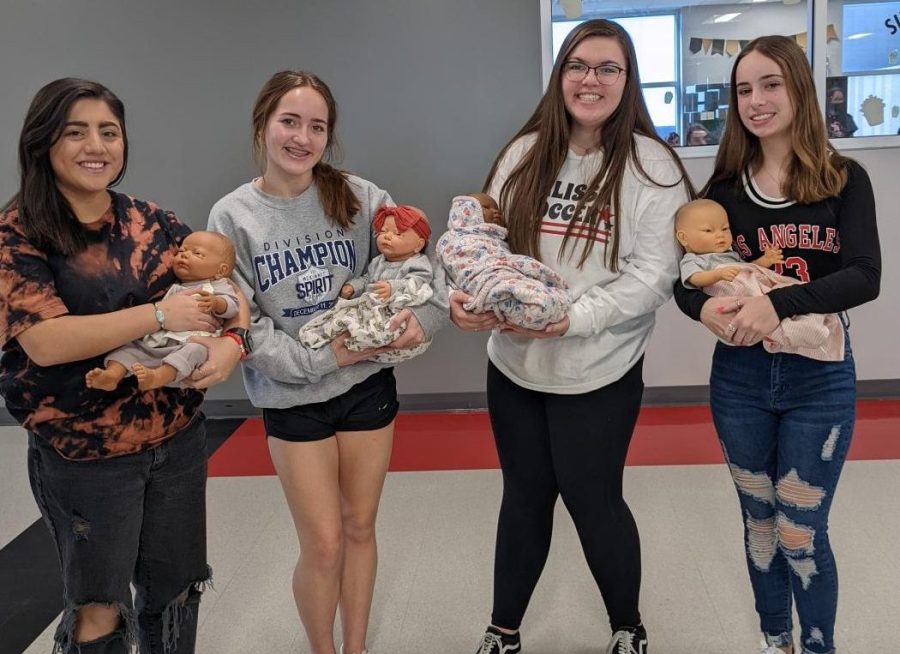Child development students experience parenthood
February 18, 2022
Child development teacher Chelsea Beal started the “Ready-or-Not Tot” project for the 2022 year. Students were given a choice between a “flour baby” made from a 5-pound bag of flour or a “robot (RNT) baby,” a realistic baby simulator.
Students who chose flour babies had to care for the “baby” for four days while students with a RNT baby only had to care for them for two days. The flour babies weren’t as realistic and didn’t provide students with the same experience of being a parent, but they had the same grading layout as the other students. Mrs. Beal sent students with flour babies Remind messages throughout the day, instructing the students what their baby needed such as diaper changes, feeding, attention, and burping. Every student, including RNT parents, had an hourly log to fill out describing what care they provided to their child.
RNT babies automatically cried and alerted Beal of the attention they needed to make it stop crying.
“As the facilitator, I am able to assign different programs per doll. These programs differ in what type of care the baby will need and at what time throughout the day,” Beal said. “ Students are responsible for notating which care key worked to quiet the baby and at what time they used it for a solid 48 hours. At the end of their time with the RNT, students will turn in their care log, and it should match my program key. Having different programs will keep students from copying each other’s attention logs. There are also lights on each doll that indicate if students tampered with the battery pack or abused the baby in any way. These lights will remain on until I reset the program, signaling to me to check with the student and assign Child Abuse research if needed.”
RNT babies required a parental permission slip because of the high expense and the attendance requirements.
“The Ready-or-Not Tots will provide a more realistic ‘parenting’ experience than the flour bags mainly due to the fact they will actually cry at random times throughout the day and will need immediate attention in order to stop the crying,” Beal said. “That disruption alone will simulate the care an infant needs once they are home. Hopefully, students will learn how much attention and care a newborn requires and how to manage one’s emotions and abilities when it comes to caring for an infant. The simulator dolls are also realistic in appearance and weight.”
Overall, students had the opportunity to get a taste of what parenthood is like.
“I hope the projects give students an authentic experience and feeling when it comes to the financial, emotional, and physical changes a newborn has on an individual and/or family,” Beal said. “The different projects allow for the opportunity for students to experience the fun and stressful aspects of being a parent.”








